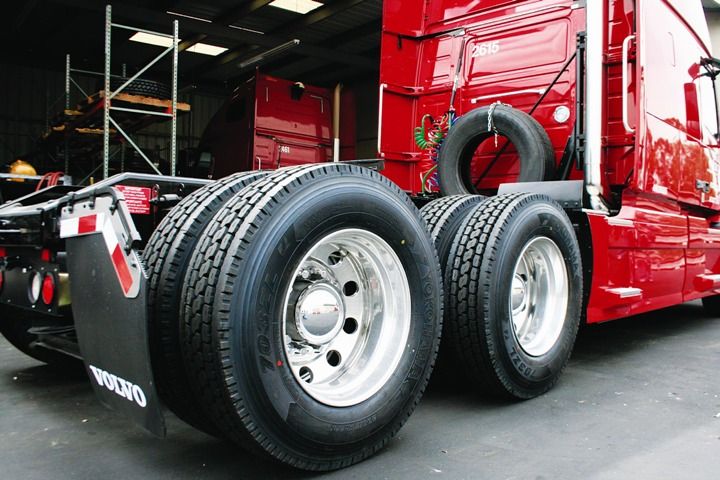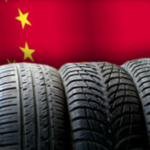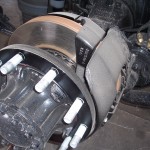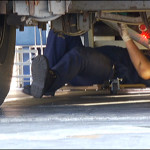
11R22.5G……..11R24.5…….12.00R20….385/65R22.5..?? How often do you receive tyre requisitions stating the aforementioned metrics? Has the specification letterings ever appeared to you like some ‘secret technical code’? Vehicle tyres are much more complex now than in years past. In response to the widely diverse requirements of vehicles today, tyres need to conform to certain specifications. These specifications include size, load and speed, and they must physically fit on the intended vehicle.
For any haulage operator, understanding truck/trailer tyre specifications is important for the safe transport of goods and people. Trucks and buses carry many thousands of pounds, and the tyres must be correctly chosen to safely carry the loads. Transmission gearing and road speed are also affected by the tyres selected.
The importance of understanding tyre specifications is better amplified by the risk associated with a wrong selection or mismatch. From a highway blowout to a construction trailer flat on the work site, trailer tyre failure is an inconvenience that can be avoided. It is advisable to use the correct tyres, calculate the correct load and maintain the right inflation to avoid problems.
TRUCK TYRES
Truck tyre sizes follow a standard formula. Standard profile will look like 11R22.5G and low-profile will have the form 275/80R22.5G. The 11 or 275/80 gives the section width and aspect ratio. “R” is for radial tyres, bias ply tyres will have a dash. The 22.5 is the wheel diameter; the “G” is the load rating. Section width is the widest point of an unloaded tyre, and the section height is from the wheel rim to the outside of the tyre.
Aspect Ratios
Truck tyres sizes starting in 8, 9, 10, 11 and 12 are standard profile tubeless with the tyre body width in inches. Standard profile tyres have an aspect ratio of 88 percent. The height of the tyre from rim to tread will be 88 percent of the width. An 11R22.5 tyre will be approximately 11 inches wide and 9.5 inches high. Low profile tyres show the width in millimeters and the aspect ratio. A 275/80R22.5 tyre is 275 millimeters wide 220 millimeters high. Typical low aspect truck tyre ratios are 70 percent, 75 percent and 80 percent. Standard size tyres such as 11R22.5 and 11R24.5 tyres will carry more load than the low profile 22.5 and 24.5 sizes. For example, 11R24.5 M726 EL drive tyre in a dual set up will carry 150 lb. more than the 295/75R22.5 and 285/75R24.5 sizes. Tube-type tyres are given widths as 9.00, 10.00 or 11.00, as in 1000R20, pronounced “ten hundred R twenty.” Tyres requiring inner tubes have an aspect ratio of 98 percent.
Wheels
The wheel size says a lot about the tyre. All wheel sizes are the wheel diameter in inches. Whole number sizes indicate multi-piece wheels that require an inner tube. Most common tube wheel sizes are 20, 22 and 24 inches. Wheels with half-inch sizing are single piece for tubeless tyres. Common sizes are 19.5, 22.5 and 24.5 inches. Truck wheels also come in several widths; a tyre size chart should be consulted to match the tyre size and wheel width.
Load Range
The final letter in the tyre size is the load range, which indicates how much weight the tyre can carry. The popular load range “G” in 11R22.5 and low-profile 22.5 can support 6,175 lbs. inflated to 105 psi in a single tyre application. Tyres mounted as duals will have a slightly lower load rating. Also, tyres will have different load capacity at different inflation pressures. The tyre manufacturer will provide a chart with all of the necessary data. The big load range “L” tyres on the front axle of dump trucks and cement mixers can carry loads of over 12,000 lbs. per tyre.
TRAILER TYRES
Trailer tyre requirements differ greatly from automotive or light truck tyres. Trailer tyres are designated “ST” for Special Trailer tyres. Automotive tyres are designated “P” for Passenger or “LT” for Light Truck and are not designed for trailer use. Passenger or truck tyres, with their more flexible sidewalls, can result in trailer sway problems. The stiffer, heavy duty sidewalls of ST tyres are designed to control and reduce sway problems. Trailer sway is dangerous at higher speeds, with top heavy loads or on vehicles with inadequate tongue weight.
- Trailer tyres are designed for use on trailer axle positions only.
- Do not use P Passenger or LT Light Truck automotive tyres on trailers.
- Do not use ST trailer tyres on passenger cars or light trucks.
- An “LT” designation, when shown on a trailer tyre size specifies load range only. It is not designed for use on light trucks.
Understanding the Difference in trailer tyres
- The construction, design, materials and testing used in ST Special Trailer tyres meet the higher load requirements, duty cycles and special demands of trailering.
- Polyester cords in an ST tyre are bigger than in a comparable P or LT tyre.
- Steel cords used in ST tyres have a larger diameter and greater tensile strength to meet additional load requirements.
- ST tyre rubber compounds contain chemicals to resist weather and ozone cracking, particularly conditions resulting from extended storage and the unusual duty cycles of trailer tyres.
- The slightly shallower tread depth of a trailer tyre reduces sway and rides cooler, which adds to tyre longevity.
- ST tyres feature stiffer sidewalls, especially in the lower section which:
- Reduces sidewall flexing causing the trailer to track straighter.
- Diminishes the risk of trailer sway.
- Lessens the risk of sidewall puncture and blowout.
- ST tyres generally offer approximately 10% percent more load capacity than a similar LT tyre and nearly 40% more than a P passenger tyre.
BIAS-PLY VS RADIAL TYRES
Some trailer tyres are bias-ply tyres, which have crisscrossing cords of polyester and/or nylon. Trailer tyres are also offered in radial construction. Radial trailer tyres feature plies that run perpendicularly across the tyre, with belts (some made of steel) running under the tread.
- Bias-ply trailer tyres are recommended for tough, rugged performance and sidewall puncture resistance such as trailers used for construction, agriculture and some marine applications.
- Radial tyres are recommended when smooth ride, tread wear, heat and extended tyre life are important considerations. Depending upon the trailer duty cycle (storage time vs. actual time in use under load) the mileage expectation of radial trailer tyre can be from 5,000 to 12,000 miles. However, under well maintained conditions, proper inflation and correct loads, considerably higher miles have been reported.
LOAD LIMITS
Trailers are used for one purpose, transporting loads. A major cause of trailer tyre failure is overloading. It’s important to know the weight of the actual load of the payload under tow, including all the toys, equipment, gas, gear, water and the trailer itself. An over-loaded tyre will produce excessive heat in the sidewall and tread which can quickly cause tyre degradation or blowout. Excessive heat is the number one cause of trailer tyre failure. The problem increases in Sunbelt areas where roadway surface temperatures are well above normal conditions.
All tyres are manufactured to handle specific load limits, but in towing trailers, loads are the single greatest concern. Review the tyre sidewall information and the vehicle owner’s manual for vehicle load limits and proper tyre inflation. Never exceed the maximum load rating stamped on the tyre sidewall or the maximum vehicle load rating, whichever is less. If possible, try to distribute the load evenly across all tyres so that no single tyre is overloaded. Tongue weight, tongue height and especially load leveling hitches must be set properly to avoid overloading the trailer tyres.
………To be Continued in Part Two.






